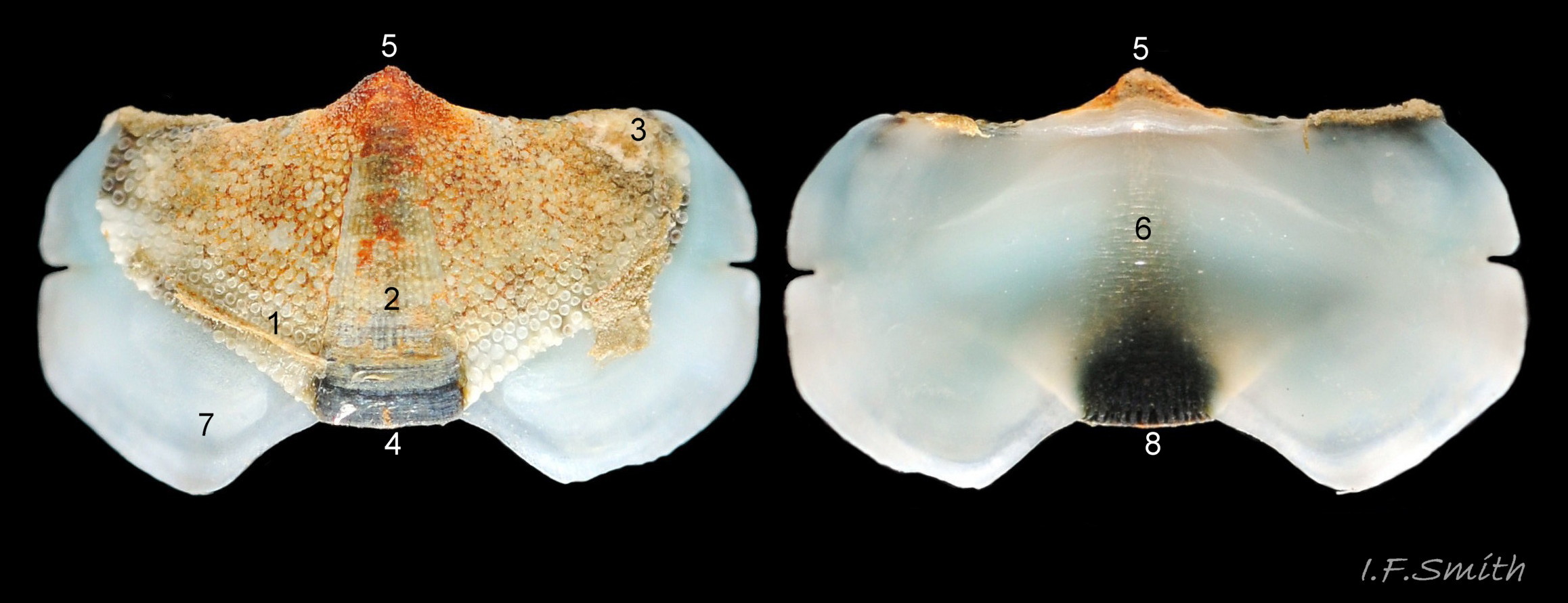Valve vi from 16 mm long specimen. Dorset, England. April 2017.
The tegmentum, visible on the live animal, is a dorsal, coloured layer of organic, chitinous material and inorganic aragonite permeated by canals. It has crowded, small, circular, flat topped, evenly distributed granules, often with a raised rim (1). The narrow triangular jugal area (2) of the tegmentum has longitudinally arranged grooves and ridges bearing closely arranged aesthetes . From above, the tegmentum of intermediate valves, such as this one, is approximately broadly triangular with rounded lateral angles (3), a flattened anterior angle known as the jugal sinus (4) , and a protruding posterior beak (5) .
The articulamentum, concealed on the live animal, is a ventral layer of white, nacreous aragonite. It is permeated by canals only in the, often black, jugal tract (6) where the openings/aesthetes are arranged in, often visible, transverse grooves . Sculpture on the articulamentum is confined to faint radial ridges on the apophyses (7) (ridges only visible in certain lights, not visible in this image) and protrusion of the jugal ridges at the jugal sinus(8) .
KEY ID FEATURES : 01 Acanthochitona fascicularis

